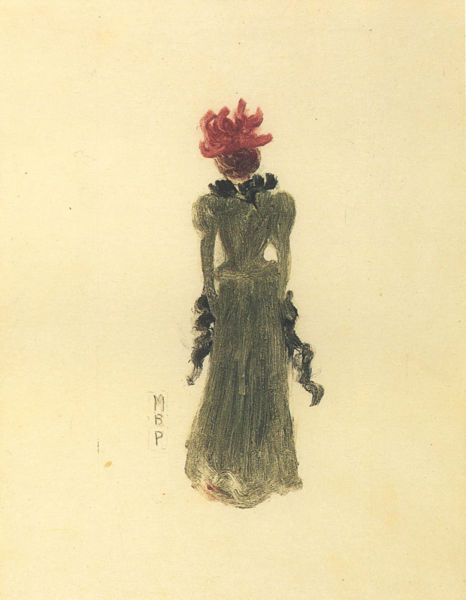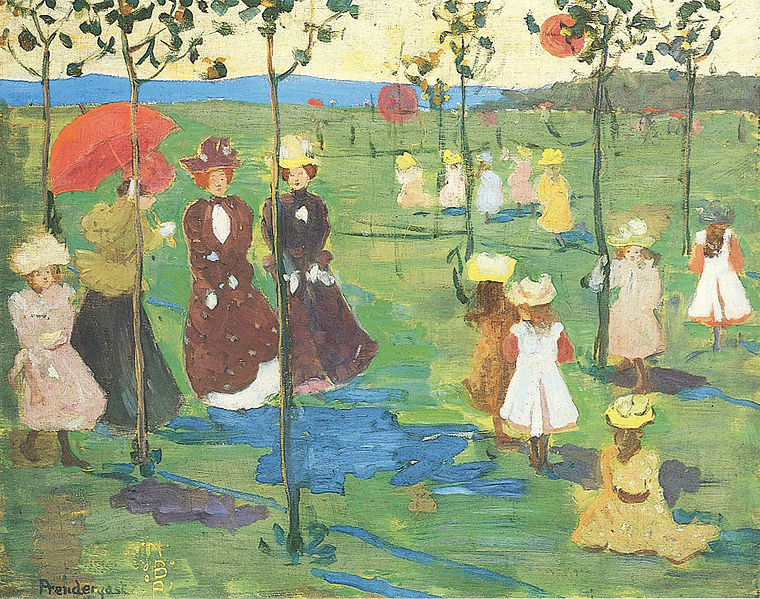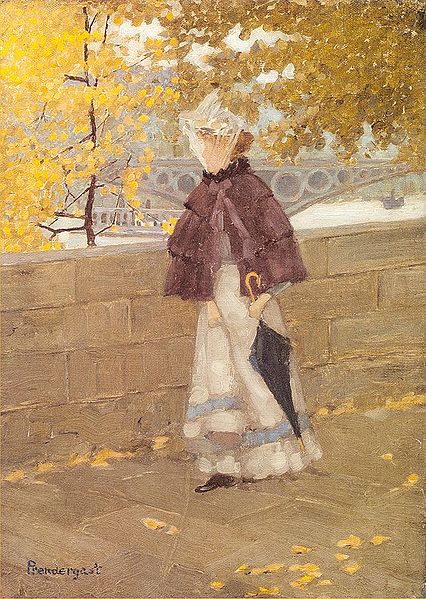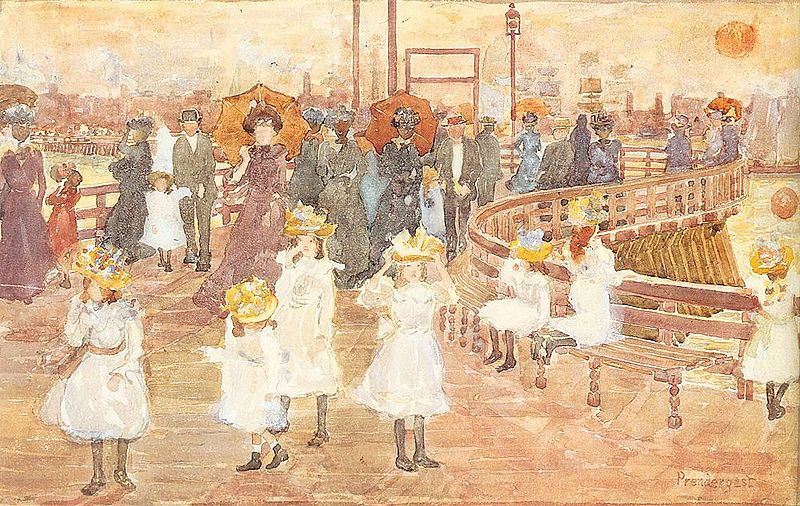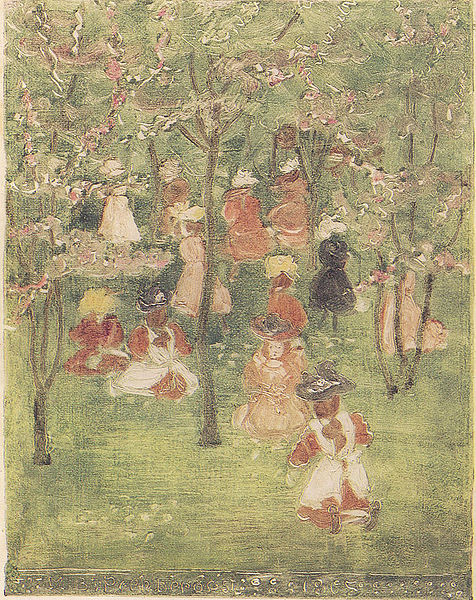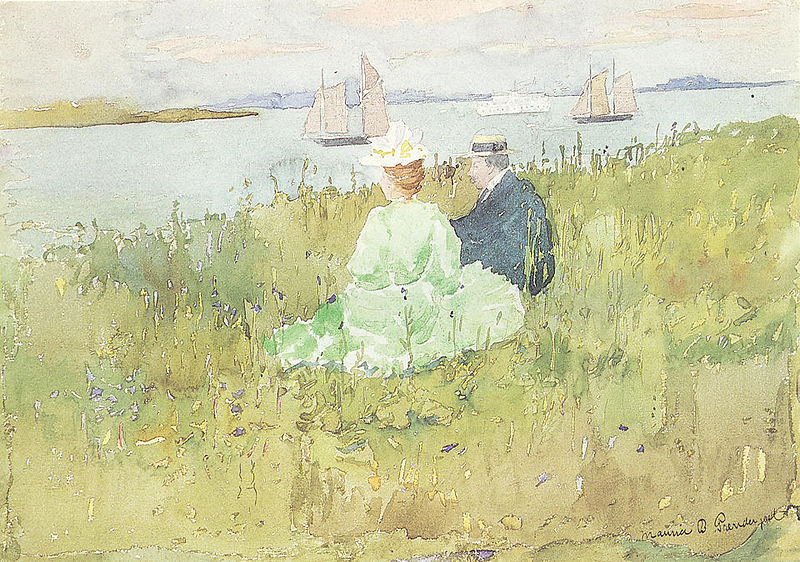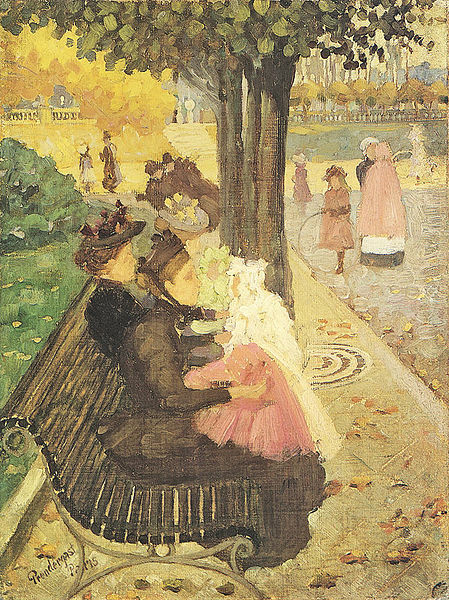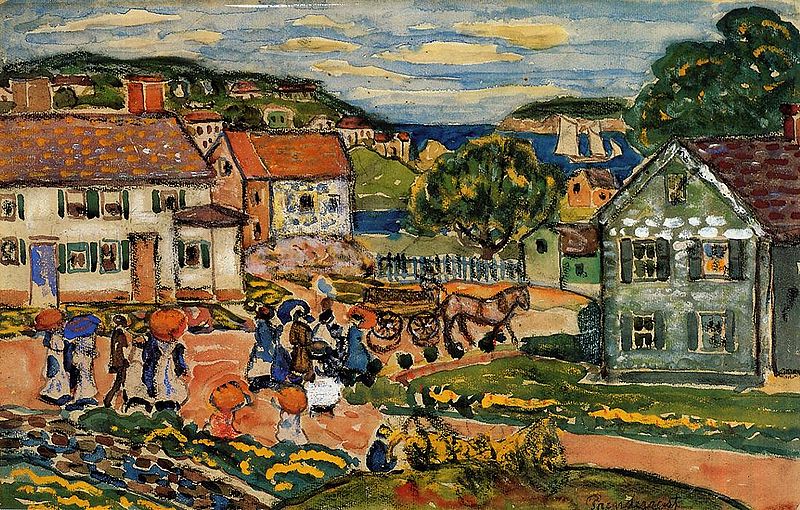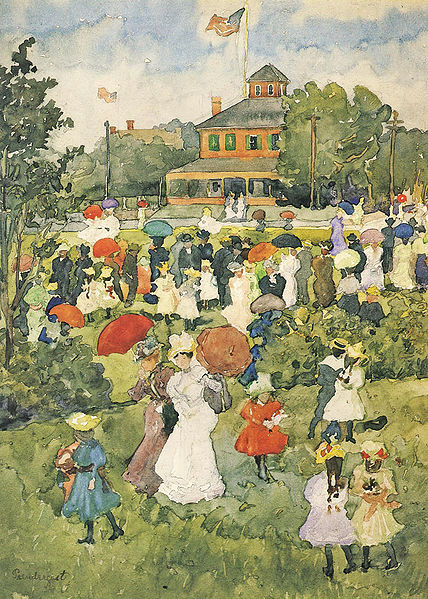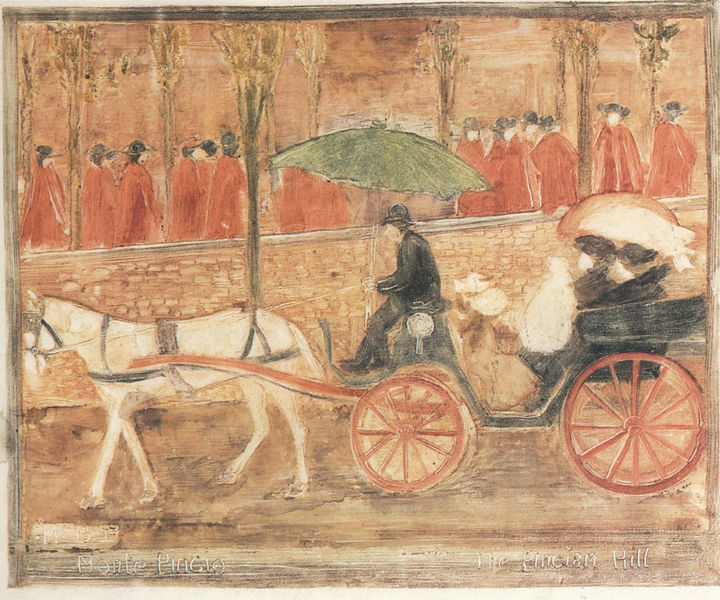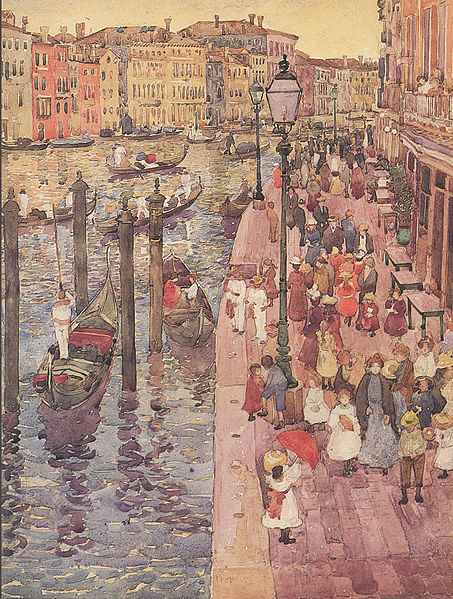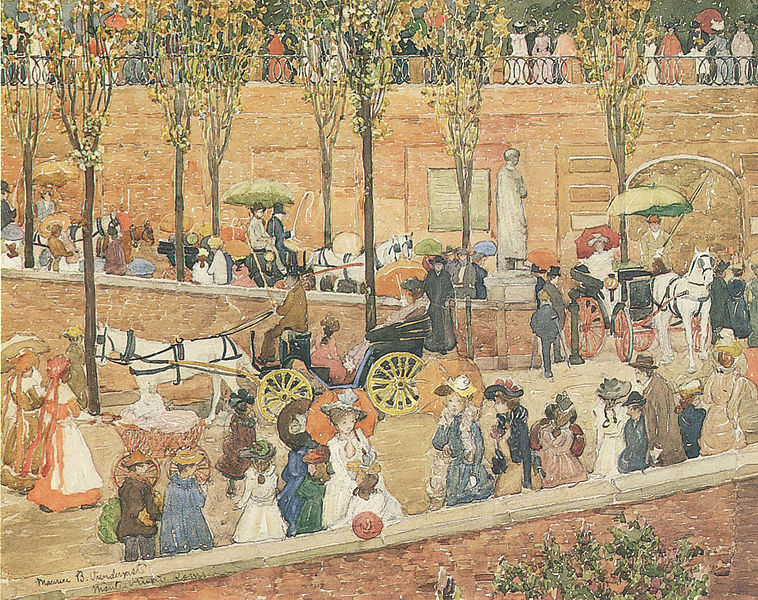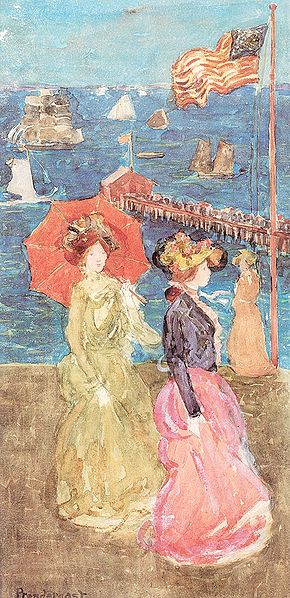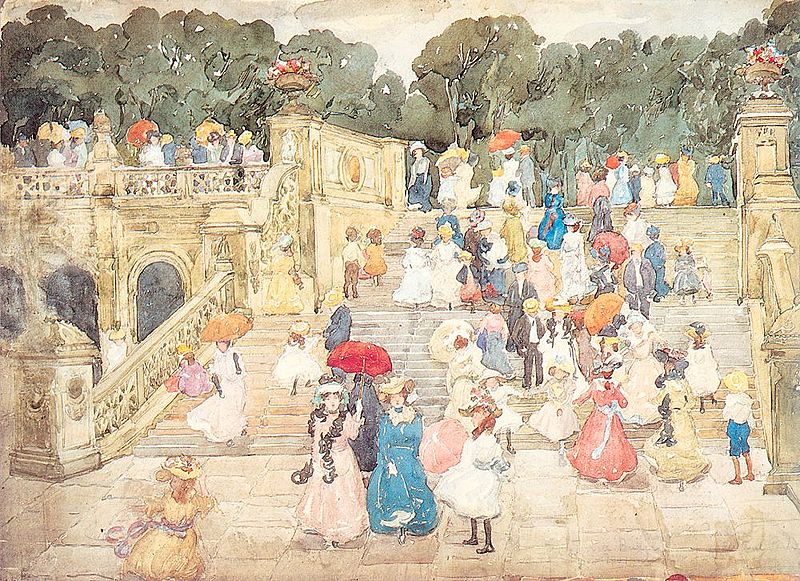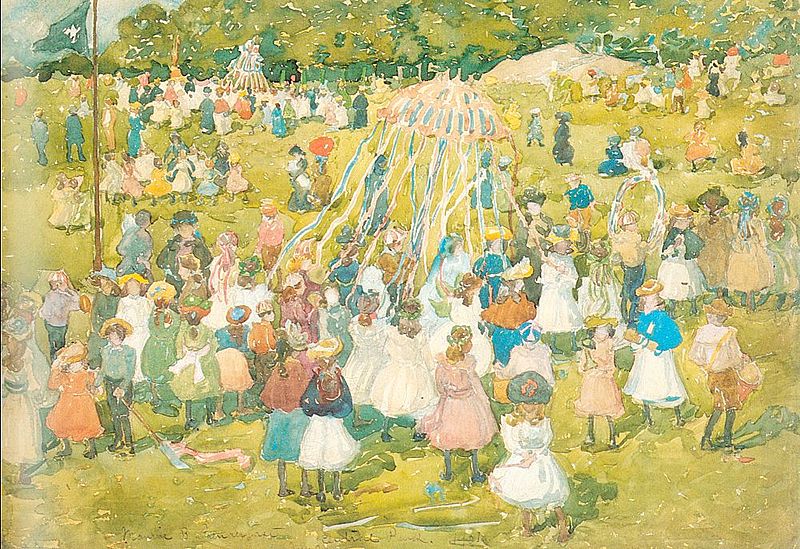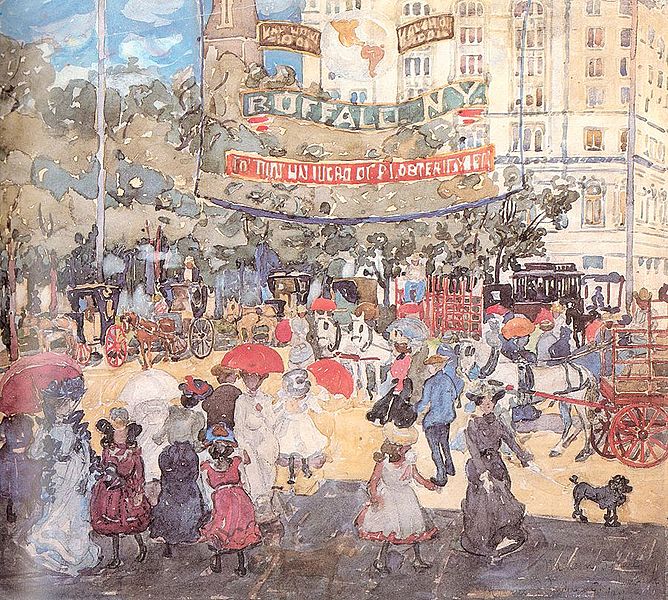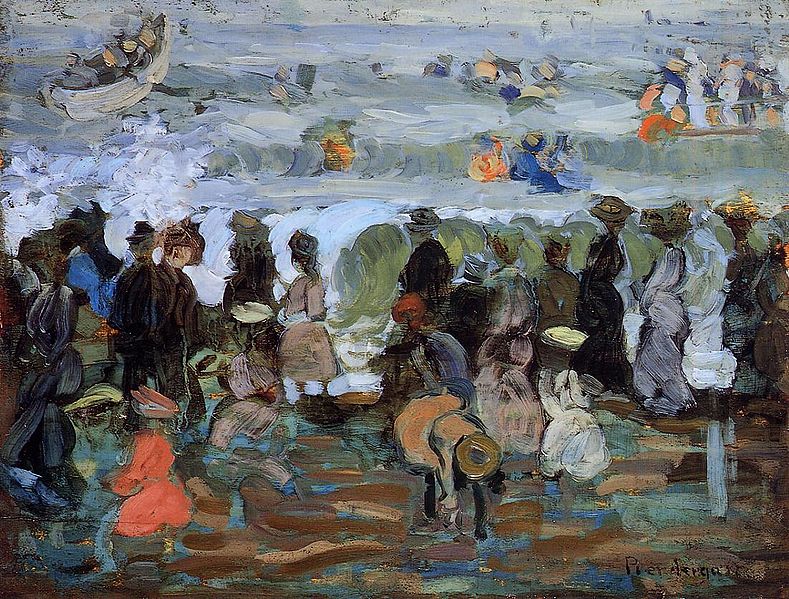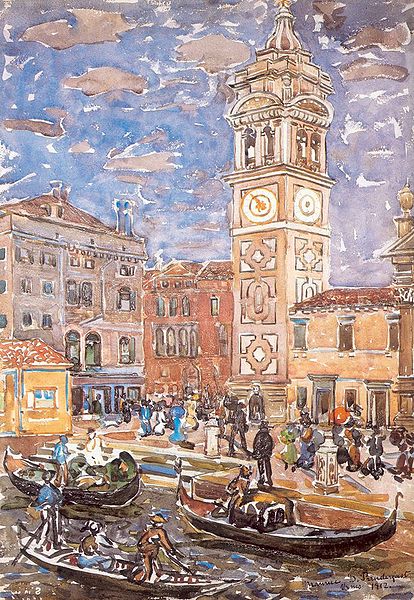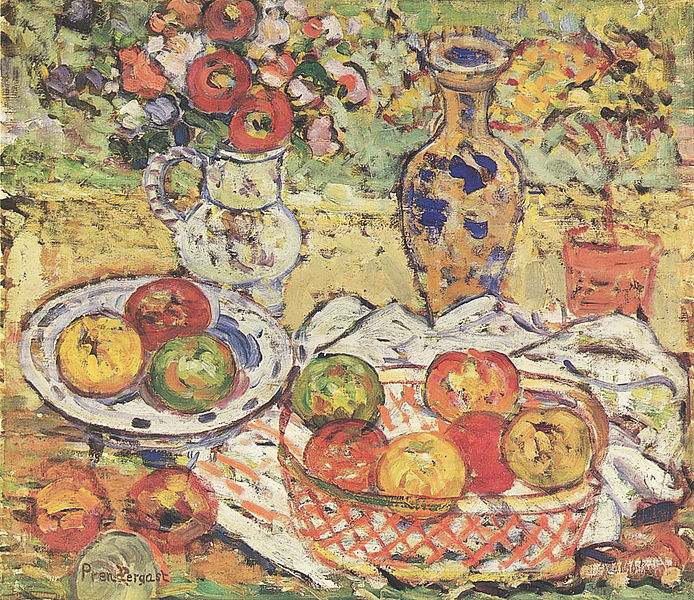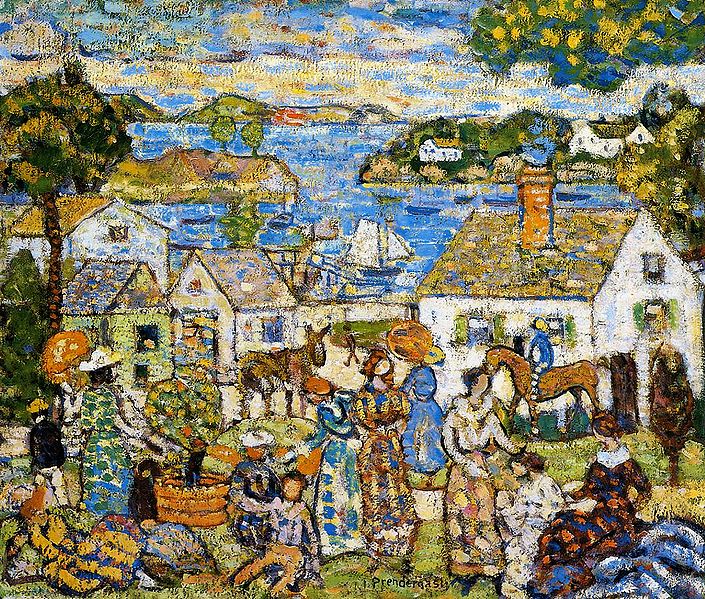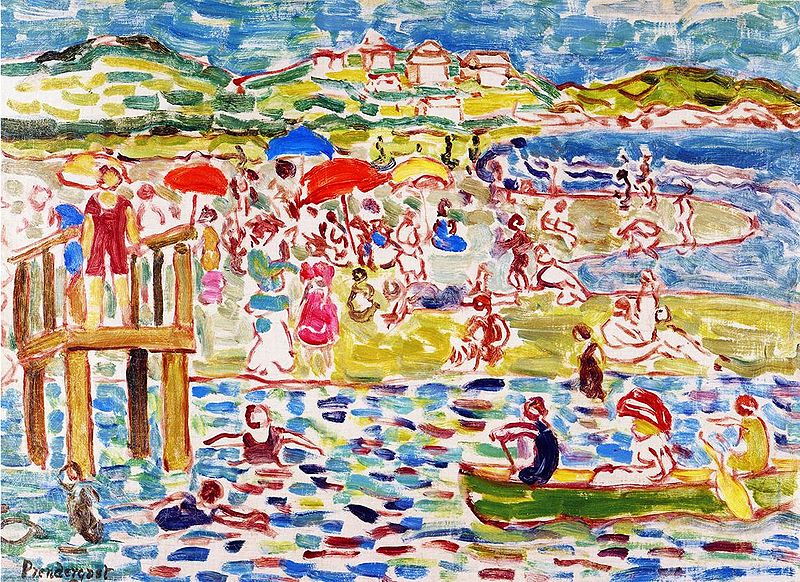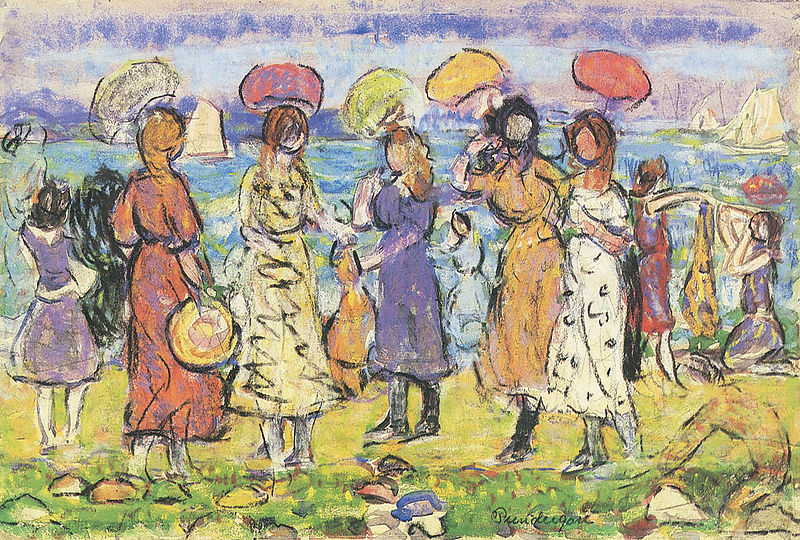<Back to Index>
- Painter Maurice Brazil Prendergast, 1858
PAGE SPONSOR
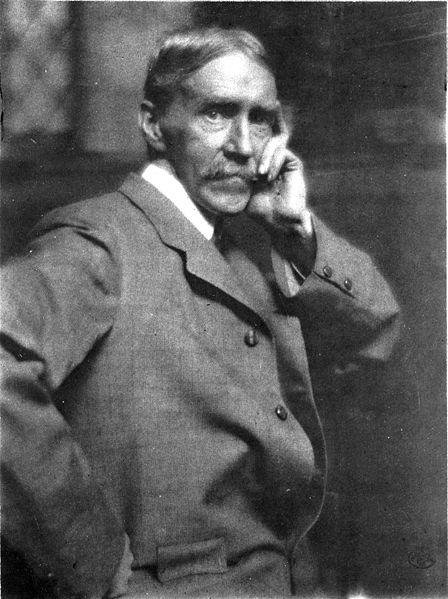
Maurice Brazil Prendergast (October 10, 1858 – February 1, 1924) was an American Post - Impressionist artist who worked in oil, watercolor and monotype. He exhibited as a member of The Eight, though the delicacy of his compositions and mosaic - like beauty of his style differed from the philosophy of the group.
Maurice Prendergast and his twin sister, Lucy, were born at their family's subarctic trading post in the city of St. John's, in Newfoundland, then a colony in British North America. After the trading post failed, the family moved to Boston. He grew up in the South End, and was apprenticed as a youth to a commercial artist. This conditioned him from the start to the brightly colored, flat patterning effects that characterized his mature work. A shy individual, Maurice remained a bachelor throughout his life. He became closely attached to his artist brother Charles, who was a successful frame maker.
Prendergast studied in Paris from 1891 to 1895, at the Académie Colarossi with Gustave Courtois and Benjamin Constant, and at the Académie Julian. During one of his early stays in Paris, he met the Canadian painter James Morrice, who introduced him to English avant garde artists Walter Sickert and Aubrey Beardsley, all ardent admirers of James McNeill Whistler. A further acquaintance with Édouard Vuillard and Pierre Bonnard placed him firmly in the Post - Impressionist camp. He also studied the work of Vincent Van Gogh and Georges Seurat at retrospectives held in Paris in 1891 and 1892. Prendergast was additionally one of the first Americans to espouse the work of Paul Cézanne and to understand and utilize his expressive use of form and color.
Prendergast returned to Boston in 1895, and worked mainly in watercolor and monotyping. A trip to Venice in 1898 exposed him to the delightful genre scenes of Vittore Carpaccio and encouraged him toward even more complex and rhythmic arrangements. In 1900, he had major exhibitions at the Art Institute of Chicago and at Macbeth Galleries in New York, which earned him critical acclaim. He showed in the National Arts Club exhibition in 1904, through which he befriended the painters William Glackens, Robert Henri and John French Sloan. He exhibited with them in 1908 at Macbeth Galleries, along with Everett Shinn, Arthur B. Davies, Ernest Lawson and George Luks, collectively known after the show as The Eight. Glackens in particular became a lifelong friend of Prendergast's.
Despite poor health that hindered his work, Prendergast continued to show in major exhibitions through the remainder of his life. Albert Barnes and Ferdinald Howald became his patrons after his shows at the Carroll gallery and the Daniel Gallery. He showed seven works at the landmark 1913 Armory Show that showed his stylistic maturity. In 1916, he participated in the Fifty at Montross show at the Montross Gallery, which also included works by Cézanne, Matisse, Seurat and Van Gogh. His work was the subject of a retrospective at Joseph Brummer Gallery in 1921.
Prendergast's work was strongly associated from the beginning with leisurely scenes set on beaches and in parks. His early work was mostly in watercolor or monotype, and he produced over two hundred monotypes between 1895 and 1902. He also experimented with oil painting in the 1890s, but did not focus on that medium until the early 1900s.
He developed and continued to elaborate a highly personal style, with boldly contrasting, jewel - like colors, and flattened, pattern - like forms rhythmically arranged on a canvas. Forms were radically simplified and presented in flat areas of bright, unmodulated color. His paintings have been aptly described as tapestry - like or resembling mosaics.
